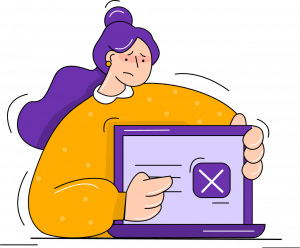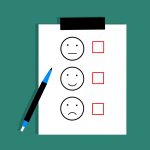Designers: do you know the difference between customer experience (CX) and user experience (UX) design? While this could be the learning of a full life, here are some basics. The impact that understanding the two distinct yet interconnected concepts can have on product design is remarkable. By embracing CX and UX, businesses can unlock unparalleled results in their product design strategy.
Contents
Product design is an essential component of any business strategy, whether this is an online product or service or a physical good design. It is the foundation upon which businesses build their presence in the market and find success. From the perspective of attracting new customers, creating products that meet the needs of target audiences is key. For a product to be successful and provide real added value to users, it must be designed with both customer experience design and user experience design in mind.
What is Customer Experience (CX) Design?
Customer experience (CX) design is the process of crafting an engaging, memorable and positive customer journey with a product or service. It focuses on delivering an optimal user experience designed to improve customer satisfaction and loyalty. CX design considers the entire customer journey:
from Customer pre-purchase research to post-purchase reviews and feedback
Every detail of the customer experience is carefully considered in order to create a unique, personalized experience tailored to the individual’s needs, preferences, and demographics.

Example on a website service: to provide the best possible CX, designers and marketers must take into account various factors like speed optimization, mobile compatibility, and personalization features such as product recommendations or chat assistance. It is these small details that can make a big difference in terms of customer satisfaction and loyalty. Additionally, UX tools like heat maps and A/B testing can help to determine the elements of your product design that are proving most successful with customers.
Overall, CX design is an essential part of any successful product design strategy. By understanding the differences between CX & UX design and leveraging various techniques such as personalization and A/B testing, businesses can create designs that satisfy customers while also unlocking unparalleled results.

How to improve the customer experience?
Measure customer experience through a study or survey:
- Define the goals of the CX study: before beginning a CX study, it is important to define the goals of the study. This will help to ensure that the study is focused on the areas that are most important to the business.
- Identify the target audience: The target audience should be identified in order to ensure that the study is conducted on the right people. This could include existing customers, potential customers, or any other relevant group related to the service or product you intend to deliver.
- Tip: you should open to, in contrary, discover that the opportunities for your product lie in a completely different segment or market than the one originally chosen for the survey
- Design the survey: Once the target audience has been identified, a survey should be developed that will help to gather the necessary data. This should include questions about the customer’s experience with the product or service, price, intended use, emotions, expectations, as well as any other relevant information. Closed questions are of course easier to handle automatically later, but every survey should have some open questions, where the user can express whatever he wants, for feedback that would have not been captured in any other question
- Perform the survey & collect the data: once the survey has been developed, it should be distributed to the target audience. This can be done through email, social media, street surveys, websites, or any other method that is appropriate.
- Analyze the data and implement the changes: once the data has been collected, it should be analyzed in order to identify any areas of improvement. This could include changes to the product or service, or changes to the customer experience.
- Monitor the new results: once the previous changes have been implemented, it is important to monitor the results in order to ensure that the desired outcomes have been achieved. This could include tracking customer satisfaction levels or any other metrics that are relevant.
Note: read the gold nuggets for innovation article to have other means of getting customer ideas for improvement and customer feedback.

What is User Experience (UX) Design?
User Experience (UX) design is an approach to product design that focuses on enhancing user satisfaction. It is all about creating a product that meets user needs and solves their problems while also providing an intuitive, easy-to-use, and aesthetically pleasing experience. To achieve this goal,
UX designers must consider the usability, accessibility, desirability, and efficiency of the product
This includes conducting research on user habits and preferences, prototyping and wireframing possible designs, testing them on users to receive feedback, and analyzing the results to determine what works best.

At its core, UX design is about understanding users’ needs and creating products that meet those needs in the most efficient way possible. This can involve developing an interface that will make it easier for users to navigate the product and understand how it works. It can also include considering how well the product fits into the user’s lifestyle, as well as how visually appealing it is.
A customer experience strategy is needed to ensure that customers have a positive and consistent experience with a company. It helps to build trust and loyalty, create a competitive advantage, and increase customer satisfaction. A personalized customer experience should focus on creating a personalized, seamless experience and be tailored to the company’s unique products and services, as well as its target audience.
The process of UX design involves multiple steps such as conducting research on user habits and preferences, creating prototypes and wireframes of possible designs, testing those designs with users to receive feedback and determine which works best, and analyzing the results of those tests in order to improve the product design. Through this iterative process of working with users at every step of the design process, UX designers can ensure they have created a product that meets users’ needs and offers them the best possible experience.
How not to interfere in a UX study?
While some tips may be obvious, or common with a CX study, the designer’s motivation for getting results may interfere with the tests themselves, that is the reason why many advise delegating or subcontracting such UX study.

UX study
Avoid making assumptions about the customer experience. This is very difficult at the initial design stages, and a bit less during the study.- Do not offer your own opinion or advice or try to influence the participant’s decision-making process. In a similar way, do not steer the participant towards a particular outcome or influence the customer’s opinion or attitude. Do not try to control the conversation or the direction of the test.
- Do not interpret the customer’s responses. Ask again shortly if unclear, in the less disruptive manner possible. Or better, video record, with user permission, and leave your question for a later time.
- Do not try to impose your own agenda on the study or do not try to rush the customer through the study. Try to have a normal product use timing for each participant.
- The participant should not be distracted from the task at hand. Be the fly-on-the-wall, observe, and do not interact unless a dangerous situation, or dead-end situation, or the tester asking repetitively for help.
The ultimate goal of UX design is to make sure that a product is beneficial for both businesses and users alike. By understanding user needs, UX designers can create products that are not only easy for people to use but offer real value to businesses by improving customer satisfaction and loyalty.
Note on Usability versus UX: usability and UX are not the same. Usability is a measure of how easy it is for users to use a product, while UX is a measure of the overall user experience, which includes usability but also includes other factors such as design, aesthetics, and emotional appeal.
Leveraging CX & UX For Product Design
Differences Between CX & UX Design
When it comes to product design, customer experience and user experience are two essential concepts that can be used together to create an effective strategy. While both terms aim to improve the user’s experience, they are inherently distinct:
CX design focuses on improving the overall customer journey, from initial research and purchase to after-sales support and loyalty programs. It takes into account all aspects of a customer’s interactions with a brand – including customer service, branding, marketing, and other touchpoints – in order to create an engaging and satisfying experience. By doing so, CX design helps businesses build relationships with customers and increase brand loyalty. CX studies may primarily be conducted by marketers.
UX design, in comparison, looks at optimizing the user’s satisfaction with a particular product or service. It involves analyzing data collected from analytics, prototyping design ideas, and conducting usability tests in order to identify areas for improvement in the digital experiences people have when interacting with a company’s products or services. UX studies, on the opposite, may primarily be conducted by UX engineers and Usability engineers.
Utilizing both strategies to work in tandem shall help organizations create products that are not only easy to use but also provide customers with a pleasurable overall experience.
CX & UX to Transform Product Design
If businesses want to transform their product design and unlock unparalleled results, they must understand the importance of utilizing both customer experience (CX) and user experience (UX) design in tandem. Knowledge of customer and user needs is essential for creating a successful product design as understanding customer and user pain points can help to create an improved overall product design.

Businesses should take both CX and UX into account when it comes to user interface (UI) design in order to provide the best user experience. UI design should be tailored specifically to the target demographic in order for the product to reach its fullest potential. Understanding how customers perceive a product and how users interact with that product is key to creating an effective UI design.
User testing is also an important part of the product design process in order to ensure that customer and user needs are met. By testing out a prototype or beta version of the product with prospective customers or users, businesses can gain invaluable insights into what works, what doesn’t, and what areas can be improved upon prior to launch. Companies should use user testing feedback to make any necessary changes before launching a final version of the product.
By combining CX and UX strategies together, businesses can create a comprehensive product design that effectively meets the needs of customers while providing users with an intuitive experience.
Results Through Effective Product Design
Product designers can create effective designs that have a direct impact on business results. By focusing on both customer experience and user experience, organizations can be aware of the usage of its product across all stages of the customer journey, from initial research to purchase, thus identifying untapped opportunities for growth and developing products that exceed expectations. When product design strategies focus on understanding customer needs, preferences, and behaviors, businesses can ensure their products meet — if not exceed — customers’ expectations resulting in higher satisfaction rates and gain a competitive edge in the marketplace.

By putting a real-time feedback process in place, companies can then refine their product offerings in order to increase customer satisfaction while also improving profitability in a very short close loop.
UX & CX Design Next Steps

In conclusion, understanding the difference between CX and UX design is essential for any business looking to improve the customer experience and create an effective product design strategy. User experience (UX) design focuses on the overall user journey, including visuals and interactions, while customer experience (CX) design concentrates on how customers interact with a product or service over time.
Knowing how to optimize these omni-channel customer experiences will help businesses build better products, enhance customer satisfaction, and gain a competitive edge in the market.
Read more: customer experience on Wikipedia.
